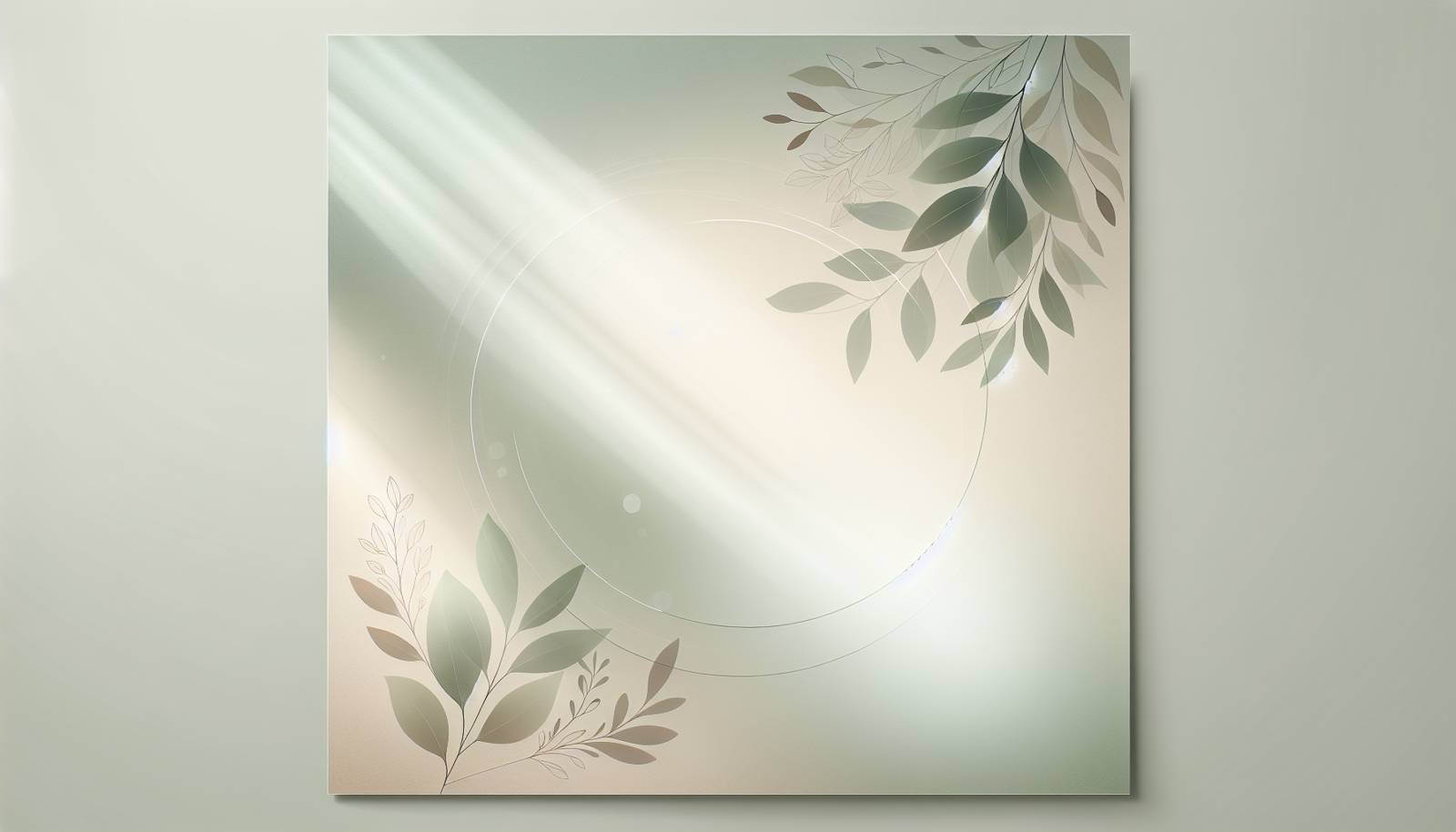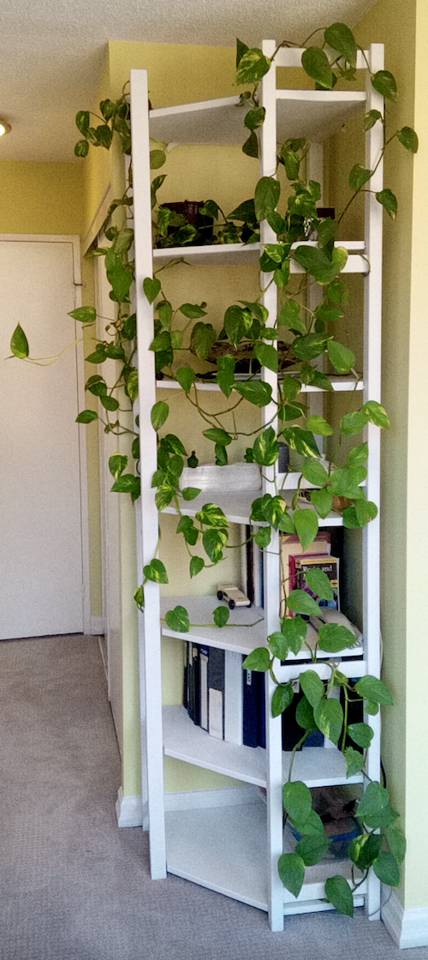
FAQ About Indirect Light for Indoor Plants

What is indirect light for indoor plants?
Indirect light for indoor plants refers to sunlight that does not directly hit the plants but is diffused, usually by curtains or reflected off walls. This type of lighting mimics the natural conditions under the canopy of a forest, where many houseplants thrive. Indirect light is bright but not harsh, preventing the plant from sunburn or overheating.

How do I measure indirect light in my home?
To measure indirect light, you can use a light meter that measures in foot-candles or lux. Place the meter at the location where your plant will grow to get a reading. Alternatively, use the shadow test: place your hand above the surface where the plant will be. If you see a distinct shadow with blurry edges, the light is likely indirect. There are also smartphone apps available that can approximate light levels using the phone's camera.

Why is indirect light important for indoor plants?
Indirect light is vital for many indoor plants because it provides the optimal balance of exposure and protection from intense sunlight. It supports photosynthesis without the risk of leaf burn or heat stress. Many popular houseplants, like ferns and pothos, naturally grow under tree canopies and are adapted to indirect light conditions.

Which indoor plants prefer indirect light?
Several indoor plants thrive in indirect light conditions, including Philodendron, Pothos, Peace Lily (Spathiphyllum), Snake Plant (Sansevieria), and the ZZ Plant (Zamioculcas zamiifolia). These plants are accustomed to low to moderate light conditions and show optimal growth in indirect light environments.

Can indirect light be too low for some plants?
Yes, some plants still require bright indirect light, and if the light levels are too low, they may struggle to grow or stop flowering. Indicators of insufficient light include leggy growth, smaller leaves, and loss of variegation in leaf patterns. It's essential to understand the light needs of each specific plant even in indirect light scenarios.

How can I increase indirect light in my home?
You can increase indirect light by strategically placing mirrors or light-colored objects around the room to reflect available sunlight. Opt for sheer curtains instead of opaque ones to allow more diffused light. Additionally, move your plants closer to windows but still away from direct sunlight.

Do grow lights qualify as indirect light for indoor plants?
Yes, grow lights can simulate indirect light if positioned correctly. LED grow lights or fluorescent tubes can provide the required spectrum of light that many indoor plants need. Place the grow lights at a sufficient distance to avoid direct exposure, mimicking the indirect sunlight conditions.

How far should indoor plants be from windows to receive indirect light?
This distance can vary depending on the intensity of light coming through the window, but generally, plants can be placed 2 to 3 feet away from a south or west-facing window. For north or east-facing windows, you might place them closer, as these usually offer softer light. Monitor your plants for signs of stress to adjust their placement as needed.

Can indirect light vary with seasons, and how does it affect plants?
Yes, indirect light can vary with the seasons due to the angle of the sun. During winter, the sun is lower, which might result in less indirect light indoors, affecting plant growth. It's beneficial to adjust plant locations seasonally to ensure they continue receiving adequate light, moving them closer to windows if needed during the darker months.

What are signs that an indoor plant is not getting enough indirect light?
Signs of insufficient indirect light include yellowing leaves, slow or stunted growth, leaf drop, and the plant leaning towards the light source. You might also notice reduced leaf size and longer internodes—the spaces between leaves on the stem. If these signs appear, consider moving your plant to a spot with better or more consistent indirect light.

What is the difference between direct and indirect light for plants?
Direct light means the sun's rays hit the plant directly, usually resulting in strong, bright light. This can sometimes cause sunburn or stress, especially for plants not adapted to sunlight. Indirect light is diffused—either by passing through a medium like a curtain or by being reflected off surfaces. It provides a consistent, moderate light source, which is less intense and suitable for many houseplants.

Can curtains create indirect light for houseplants?
Yes, sheer or semi-transparent curtains can be excellent tools for creating indirect light by diffusing direct sunlight. These curtains soften the light intensity that passes through them, providing an even and gentle illumination suitable for many indoor plants.

How does indirect light affect the photosynthesis process in plants?
Indirect light provides a balanced light intensity that allows for effective photosynthesis without overloading the plant with too much energy, which could occur in direct sunlight. This helps maintain steady growth, as the plant can convert light energy into chemical energy efficiently under less stressful conditions.

Is east-facing windowsill considered indirect light?
An east-facing windowsill typically offers indirect light, especially later in the day. In the morning, it receives direct sunlight, which is gentler in intensity and can be beneficial for plants that need slightly more light. However, it's crucial to assess the specific needs of your plants and observe how they react to this amount of light exposure.

Are there tools to help determine indirect light spots in my home?
Yes, there are several tools available. You can use a light meter to get precise light readings in different areas of your home. Smartphone apps can also help estimate the light levels, offering a convenient alternative if you don't have a dedicated light meter. These tools can make it easier to find the perfect spot for your plants to thrive.

How can I optimize my home for indirect light if I have limited windows?
To optimize your home for indirect light with limited windows, utilize mirrors to reflect light into darker corners, use translucent shades to diffuse light, and consider installing shelves near well-lit areas to increase plant exposure. You can also incorporate artificial lighting solutions like LED grow lights to supplement natural light.

What role do reflective surfaces play in providing indirect light?
Reflective surfaces like mirrors or glossy walls can enhance the distribution of light in a room, helping to increase the amount of light reaching your plants indirectly. This reflection can help brighten areas that would otherwise be in shadow, making them suitable spots for plants that require indirect lighting.

Can south-facing windows provide indirect light?
South-facing windows often provide the most intense direct sunlight throughout the day, which may require the use of sheer curtains or blinds to convert it into indirect light. By diffusing the intensity of the light, these windows can still be ideal for plants that require bright indirect light if managed properly.

Should plants be rotated to ensure even indirect light exposure?
Yes, rotating plants periodically ensures that all sides receive equal light exposure, which helps promote balanced growth. Rotating prevents the plant from becoming lopsided as it naturally grows towards the light source. This is especially important in settings where light comes predominantly from one direction.
